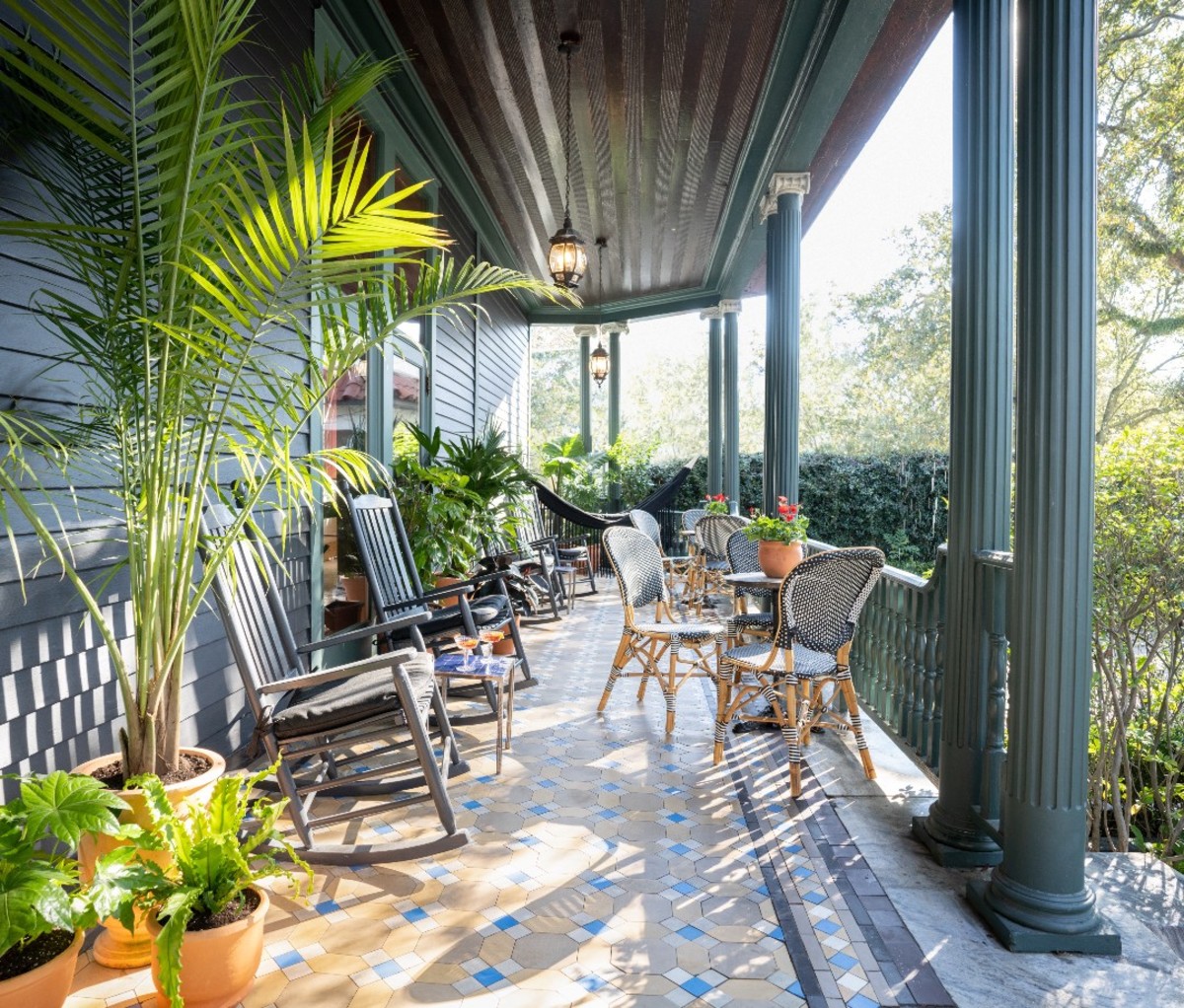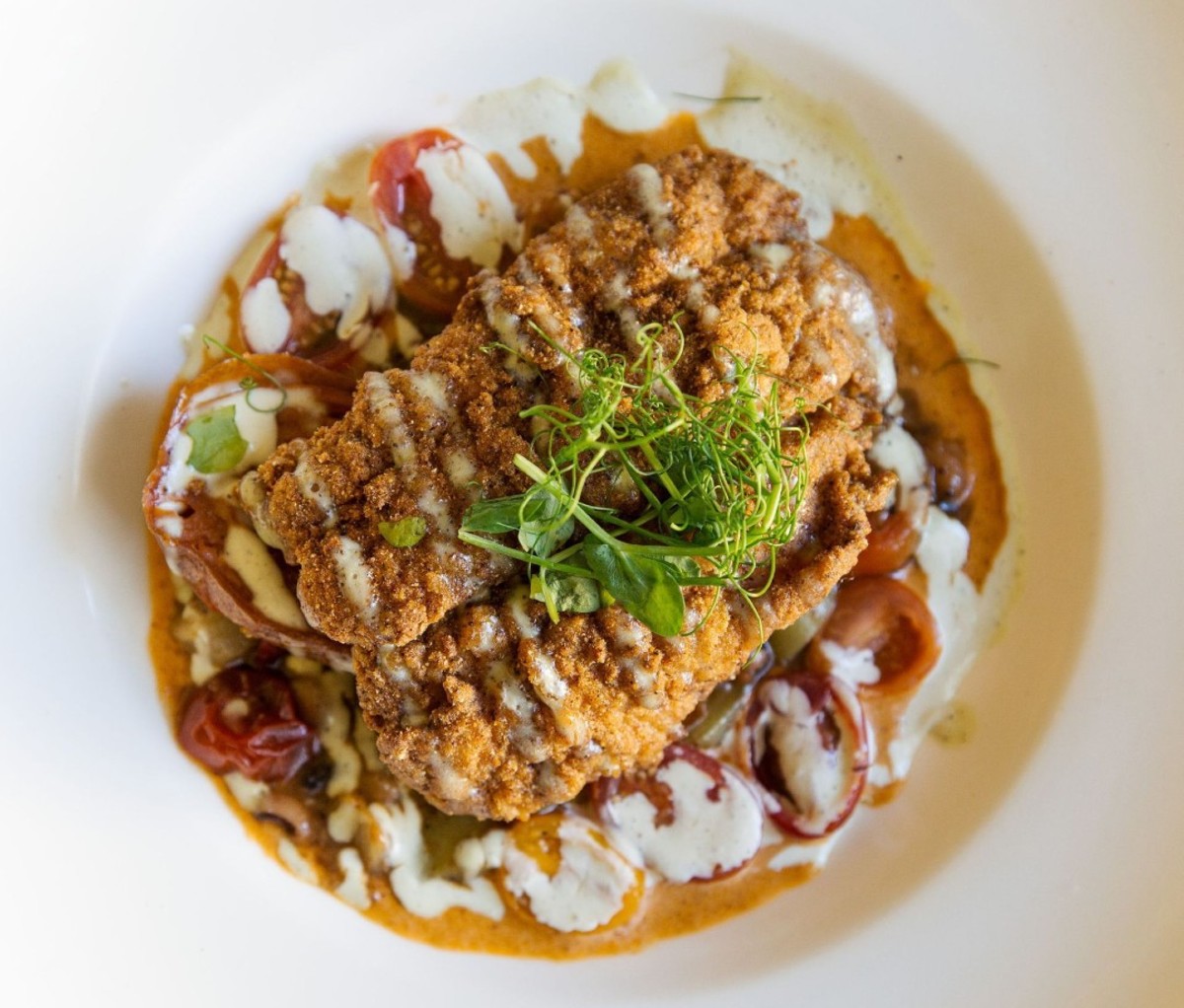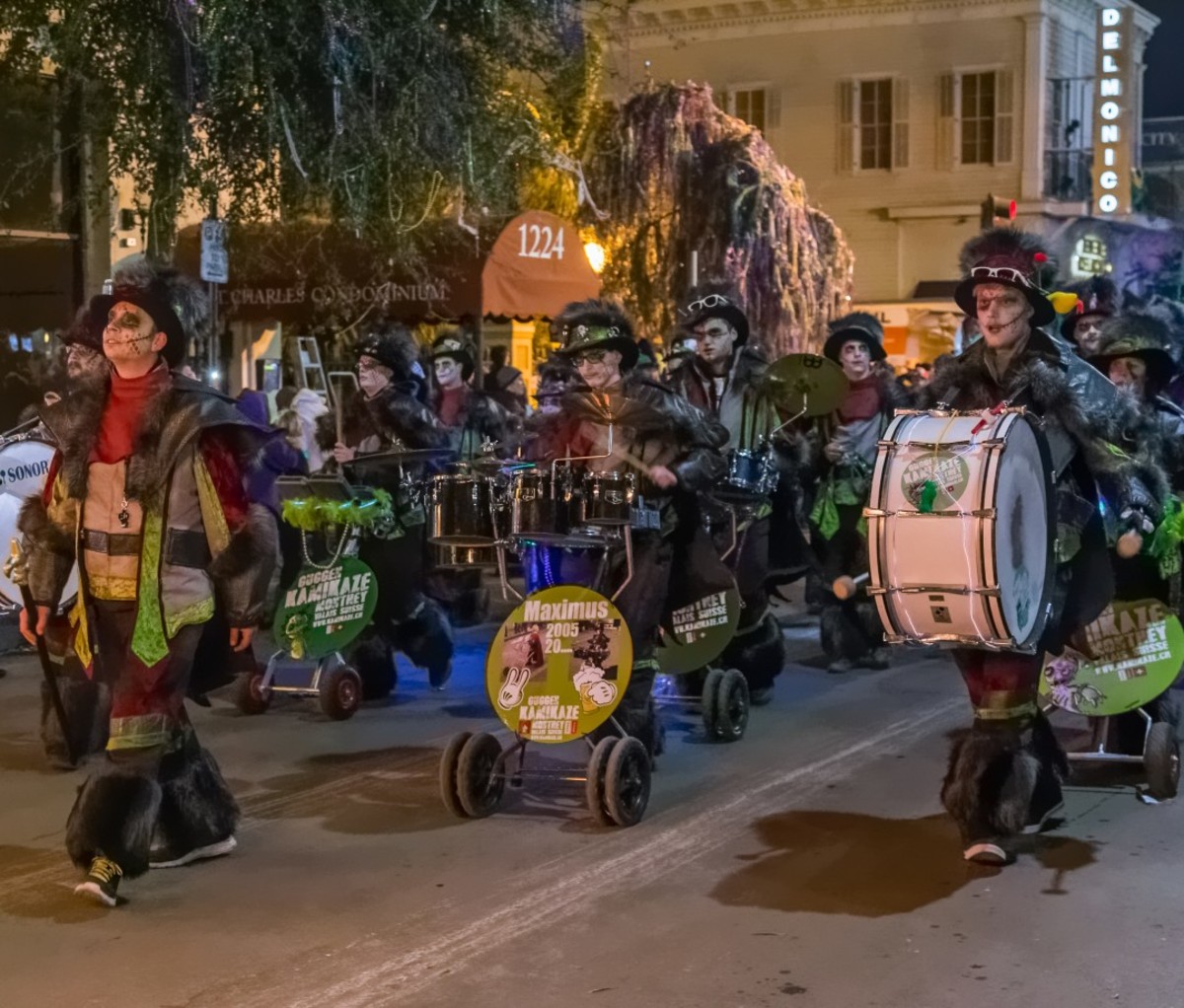Mardi Gras, Carnival, call it what you want—the debaucherous annual celebrations are actually one in the same. Carnival is generally connected to Rio de Janeiro, Brazil, while Mardi Gras takes place in New Orleans, LA. Both celebrate the roughly month-long period between Epiphany and Fat Tuesday that takes place each January and February with parades, costumes, and unparalleled revelry.
Also known as the Twelfth Night or Three Kings’ Day, January 6 always marks the official start of Carnival. Though, arguably, the most important weeks of the celebration are the two leading up to Fat Tuesday. Using the Catholic calendar, this takes place exactly 46 days before Easter. That means the length of Mardi Gras shifts a bit each year. In 2023, Mardi Gras’ culminating day will take place on February 21.
Celebrating like a local feels different
Stereotypical depictions of Mardi Gras often tie it to wild traditions. You know, flashing for beads, downing sticky Hurricane cocktails, and long nights frolicking through Bourbon Street. But when we visited New Orleans to participate with a local friend, we were surprised to find the celebration had many other facets. It’s richer, more meaningful, and far more family-friendly than one might imagine. Mardi Gras is magical in its ability to reflect all angles of fun at once—if you’re willing to look.
For one, parades take place throughout the city for weeks leading up to Fat Tuesday. These are led by “krewes,” small and large organizations that spend the better part of the year planning parades, balls, and activities. Some are a decade and even a century old. For the most part, these parades are certainly not for out-of-towners. Instead, they provide opportunities for locals of all ages to celebrate with their neighbors.
“My first memories were always the incredible sense of community around Mardi Gras,” says Robért (Ro) LeBlanc, owner of The Chloe Hotel and a lifelong New Orleans resident. “We’d see the parade uptown with a group of friends, then once the parade had passed, we’d hurry to our car to catch it again downtown with extended family.”

LeBlanc recalls memories of watching for his grandfather, who was captain of the Krewe of Hermes. The krewe kicks off the second week of Mardi Gras with a Friday night ride.
“I so vividly remember seeing the incredible high school marching bands up close and the pageantry of the floats and the costumes,” Le Blanc says. “As a kid, it was great because we got a backstage pass to Mardi Gras as we would head over to meet my grandfather and uncle as they came off the floats at the end of their routes.”
How to catch the best Mardi Gras parades
If you only have a few days in New Orleans during your stay, the four days leading up to Fat Tuesday on Feb 21 will act as your Mardi Gras parade marathon. It’s a time when “super krewes” dominate the streets. Festivities kick off with Endymion on Saturday, Bacchus on Sunday, and Orpheus on Monday. There’s also a large chain of parades on the big day of Mardi Gras.
While the main krewes are obviously a must-see, we also suggest extending your travel dates on the front end to experience some of the smaller parades. They draw a more local crowd and are less packed. This means a better opportunity to potentially catch beads and other throws. At these joyous events, you’ll see New Orleanians young and old—some sitting atop makeshift ladders in an attempt for a better view—and a better bead-catching vantage point.
Many krewes roll through the streets of the bustling French Quarter, including the tongue-in-cheek Intergalactic Krewe of Chewbacchus. This krewe not only celebrates nerd-dom in its highest form but does so sustainably. They forego gasoline power in exchange for DIY sustainable ingenuity. The parade put on by the Mystic Krewe of Barkus is perfect for dog lovers. It’s led by local pups that double as centerpieces for canine-friendly floats. The dogs are often seen sporting elaborate costumes as they ride through the French Quarter in style.
Remember, not everything happens in the French Quarter…
LeBlanc also suggests breaking away from the French Quarter, calling Uptown “the best place to catch the parades” along Napoleon Avenue and St. Charles. The hotelier tells Men’s Journal that two can’t-miss krewes are Muses and Iris (both are all-women), which “bring an unbridled energy on Thursday night (Muses) and Saturday during the day (Iris) at perfect times.”
Perhaps our favorite insider tip, though, is how to get seats at the best restaurants in town without a reservation.
“From Uptown, you can easily walk to and from different bars and locales, and there are tons of great restaurants nearby. If you’re willing to forgo the last 15 to 20 minutes of a parade (each can last up to 2+ hours depending on the number of krewes), you can get a reservation at pretty much any table in any restaurant in New Orleans, no matter how difficult that usually may be.”
Dining in the Big Easy
Mardi Gras is easily the busiest time of year for restaurants and bars in New Orleans. You’ll want to have a plan in place if your goal is to truly experience Nola’s food and beverage scene.
Most travelers already know about heavy hitters like Cafe du Monde, the famed beignet spot that attracts a crowd near and far any time of year. While beignets are a must during your visit (there’s actually a great spot down the street from The Chloe called Nola Uptown Coffee & Beignets), king cakes reign supreme during Mardi Gras. These brightly colored confections are a staple of the annual celebrations. They also hide a surprise inside in the form of a tiny plastic baby. If your slice contains the baby, you’re dubbed your group’s king or queen of Mardi Gras. Of course, you’re also responsible for purchasing next year’s cake.
You can pick up some of the city’s best king cakes from spots like Antoine’s Famous Cakes and Dong Phuong Bake Shop, but LeBlanc tells us that Chloe residents also get a complimentary slice during their stay. Because you can’t subsist on cake alone, we also suggest grabbing reservations (or leaving the parades early to jet over) to one of New Orleans’ many incredible soul restaurants. There, you can experience local dishes such as po’ boys, etouffée, jambalaya, and gumbo.

For an authentic New Orleans dining experience, you can’t go wrong with Commander’s Palace, located in a grand blue Garden District mansion, charming Uptown corner restaurant La Petite Grocery, or local institution Willie Mae’s Scotch House in Treme (just be ready for a line). Lunch at Dooky Chase’s, also in Treme, is a must, as well as cheap late-night eats at Coop’s Place in the French Quarter. Al fresco dining is done right at Tableau, and we suggest dinner at modern Southern bistro Sylvain—both in the French Quarter.
As far as imbibing goes, LeBlanc offers his favorite party bar recommendation: Old Absinthe House, going as far as to say “Everyone needs to go there for at least one drink during Mardi Gras.” Jazz lovers can saunter over to the Bayou Bar in the Pontchartrain Hotel to listen to the musical genius that is Peter Harris, and cocktails are absolutely necessary at Galatoire’s or Arnaud’s.
Where to stay in New Orleans during Mardi Gras
Public transportation is not huge in New Orleans, save for buses and the iconic streetcar. So, prepare to walk or take rideshare apps fairly frequently during your trip. Therefore, not only does the location of your hotel help to set the vibe for your entire trip, it’s also an important factor considering how busy the city will be during the festivities—especially when rideshare apps are flooded, Streetcar lines are long, and many streets are blocked off for parades.
Our tip? It can be tempting to stay in a bustling neighborhood like the French Quarter (and we’re not discouraging you from doing so). But check out areas with a more authentic local focus, such as Uptown, Marigny, and the Garden District. This can set a more qualitative tone for the trip and keep you from getting overwhelmed by the crowds. (Think less competition for reservations and cleaner streets.) An added plus? The absence of drunk people yelling late into the night.
“With The Chloe being in the residential Uptown neighborhood, our guests get a far more authentic Mardi Gras experience because they can watch all of the parades pass while having coffee or cocktails on our porch,” says LeBlanc. “What’s more, being Uptown allows them to experience Mardi Gras as locals do: among friends and family, old and new, and with the tremendous sense of camaraderie that makes Mardi Gras so great for those of us who live here. You don’t get that experience downtown.”
Dressing the part
Besides the general revelry of Mardi Gras, it’s also known as a unique time of self expression. When it comes to how one should dress during the celebration, literally anything goes.
There’s a difference between dressing up for Mardi Gras and, say, Halloween. You aren’t typically putting on a costume to become a character at Mardi Gras. Instead, you’re dressing as the kookiest version of yourself.

If you arrive in the city still unsure of your attire choices, you’re in luck. LeBlanc tells us that The Chloe will be operating as an Uptown Mardi Gras hub throughout the season. There’ll be a daily Mardi Gras Market featuring local vendors selling festive apparel for all your costume needs. Think: tie-dye jumpsuits, glitter, custom capes, fringe fanny packs, and more. On February 10, they’ll be hosting a headdress-making workshop by the pool with local maker Ellen Macomber.
Planning your next visit to New Orleans
If a Mardi-timed trip to New Orleans isn’t in the cards for you this year (or if it is and you just can’t get enough of the city), LeBlanc also recommends a June visit.
“The weather actually hasn’t gotten too hot by then, but the city is less crowded and it’s so easy to pop into and out of all of the great restaurants without having to worry about reservations or availability,” he adds.
“Last but certainly not least, Tales of the Cocktail in July is always an incredible time. While it gets really hot during the day, the city cools down at night and there are so many incredible events and parties that highlight New Orleans’ importance in cocktail history.”
from Men's Journal https://ift.tt/DosBP8j


0 comments